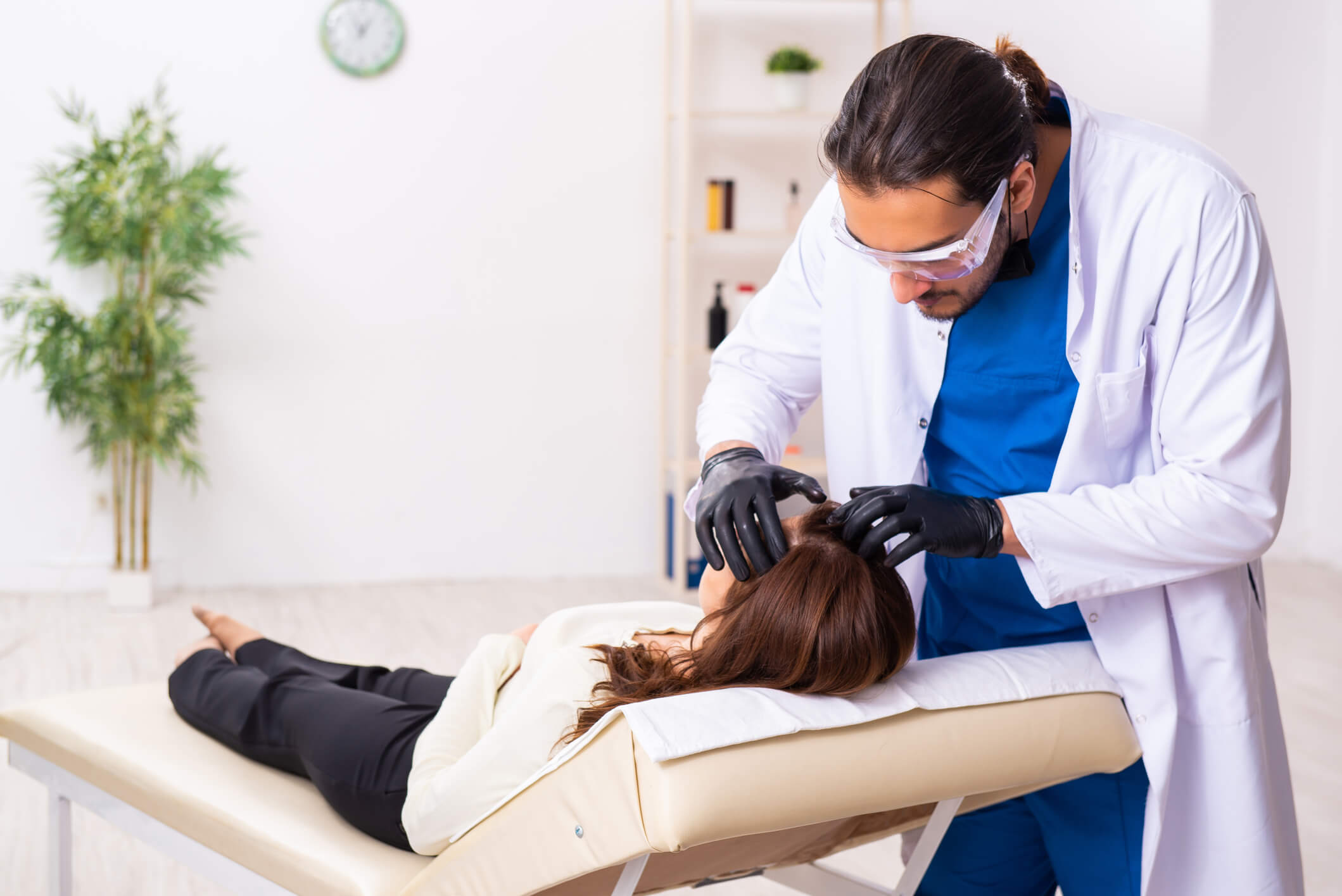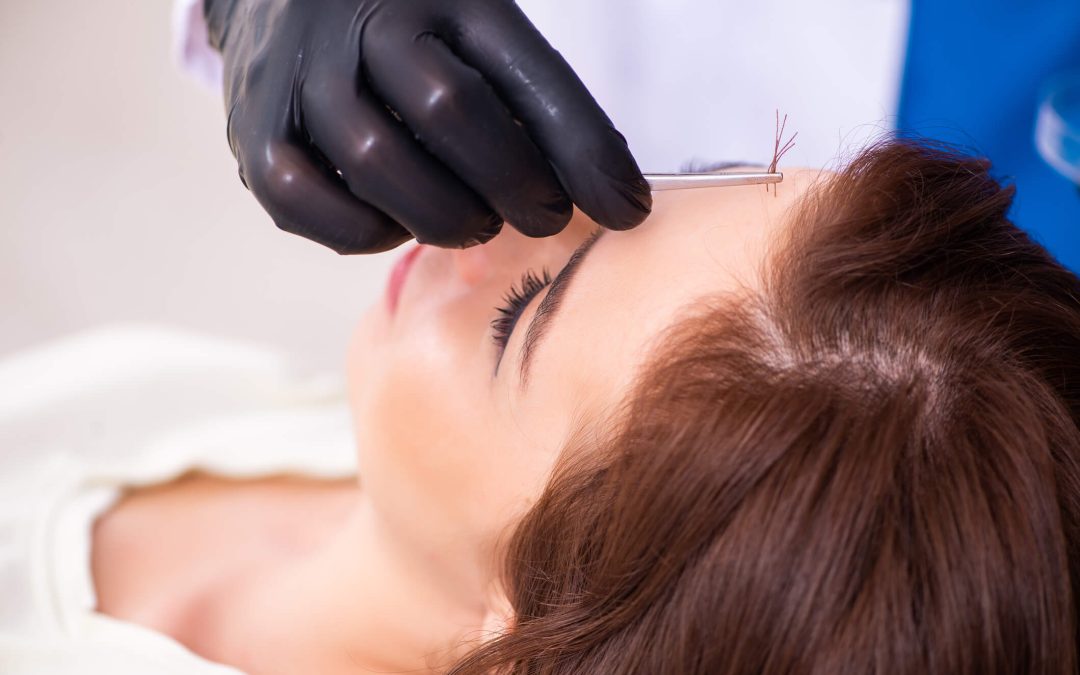Hair loss is often associated with males but can also affect women. Hair thinning and baldness in women can result from genetics, hormonal changes, aging, or other causes. This leads to a common question: Can women undergo hair transplant procedures? The answer is yes. Hair transplants have gained popularity as more women seek solutions to restore their hair and confidence. Factors like the type of hair loss, the hairline’s condition, and the donor site impact the procedure’s success. Women may opt for temporary solutions like hair extensions, but hair transplants offer a permanent fix. The procedure involves making small incisions in the skin to transplant grafts from the donor site to the treatment area, typically at the top or other thinning spots. While discomfort may occur, the results often justify the cost and effort for women looking to regain their natural hair and preferred hairstyles.
Understanding Female Hair Loss
For women, hair loss may result from an assortment of factors. The most common form is female pattern baldness, also known as androgenetic alopecia. This condition is typically genetic and is characterized by the thinning of the hair on the crown of the head. Additional factors that contribute to hair loss in women include:
- Hormonal imbalances: Hair thinning can be caused by variations in hormone levels, such as those caused by pregnancy, menopause, and conditions such as polycystic ovary syndrome (PCOS).
- Stress: Telogen effluvium is a transient hair loss condition that can be precipitated by emotional or physical stress.
- Nutritional deficiencies: Nutritional deficiencies, including essential nutrients such as zinc, iron, and biotin, may exacerbate hair depletion.
- Medical Conditions: Medical conditions like thyroid disorders, anemia, or autoimmune conditions like alopecia areata can cause hair loss.
- Medications: Hair loss may result from specific medications, such as chemotherapy.
Although women’s hair loss is frequently less apparent than men’s, it can still substantially affect their quality of life and self-esteem.
What is a Hair Transplant?
A hair transplant is a surgical procedure that involves the extraction of hair follicles from a specific area of the body (primarily the back or sides of the cranium, where hair is more resistant to thinning) and their transplantation to the thinning or balding areas. Hair transplantation is conducted using two primary methods, each offering various options based on the size and type of hair loss and individual concerns. The choice of method depends on the amount of hair needed, the specific cases of hair loss, and the types of results desired. Each approach has its advantages, and patients may select the one that best addresses their needs, whether for a larger or smaller treatment area. Factors such as the patient’s overall health and expectations can influence the decision.
- Follicular unit transplantation (FUT): This procedure entails removing a swath of scalp from the donor area, dissecting it into individual follicular units, and transplanting them into the recipient area.
- Follicular Unit Extraction (FUE): In FUE hair transplant, a small punch tool extracts individual hair follicles from the donor area and transplants them into the thinning regions.
Although both methods are effective, FUE is frequently chosen by women due to its shorter recovery time and minimal scarring.
Is hair transplantation advantageous for women?
Indeed, hair transplants can be advantageous for women; however, they are not always appropriate for all individuals. The following are several critical variables to evaluate:
- Hair loss severity: Women who have experienced significant hair loss may not be suitable candidates for a hair transplant, as there may not be an adequate supply of donor hair to produce a natural-looking outcome. Nevertheless, women who experience more localized hair thinning, such as around the crown or part line, may experience exceptional outcomes.
- Hair quality: A successful transplant depends on the quality of the donor’s hair. Women with thin or sparse hair may receive a different level of coverage than those with thicker hair. To ascertain the optimal strategy, engaging in a comprehensive consultation with a hair restoration specialist is imperative.
- Age and health: Hair transplants are most effective for women in excellent health and have realistic expectations regarding the outcome, as with any surgical procedure. Women in their 30s or older who have stable hair loss typically achieve the most favorable results.
What are the advantages of hair transplants for women?
For women who are experiencing hair loss, hair transplants provide numerous advantages:
- Permanent results: Hair transplants offer a permanent solution, unlike temporary remedies such as medications or wigs. The transplanted hair is generally resistant to the effects of hair loss, meaning it will continue to grow naturally.
- Natural appearance: The results of a hair transplant can be extremely natural when performed using advanced techniques such as FUE. The hair follicles are positioned to resemble the natural growth pattern, guaranteeing a seamless integration with the adjacent hair.
- Enhanced self-assurance: Hair loss can significantly impact a woman’s self-esteem. A successful hair transplant can restore hair and confidence, enabling women to feel more at ease with their appearance.
- Minimal downtime: Hair transplants typically require minimal recovery time. Although the full effects may take several months, most women can resume their normal activities and return to work within a week.

Does this involve any risks?
Hair transplants, like any surgical procedure, involve specific hazards. These may encompass:
- Infection
- Scarring (particularly with FUT)
- Uneven results or unnatural hair growth patterns
- Temporary discharge of transplanted hair
Selecting a hair transplant surgeon who is board-certified and has a wealth of experience can mitigate these risks and guarantee the most favorable results.
Conclusion
Hair transplants are a viable and effective solution for women experiencing pattern hair loss. Many women can benefit from restoring natural, permanent hair regrowth, although not all qualify. It is essential to consult with a skilled hair restoration specialist who can evaluate the extent of your hair loss, discuss treatment options, and determine the best technique for your case. The process involves selecting the appropriate grafts for the treatment area and understanding the aftercare required to ensure successful results. While some women may not be candidates for all hair loss treatments, the right approach can significantly affect hair regrowth. The specialist will also address how diet and lifestyle impact the results and provide guidance on minimizing scarring. The procedure can help improve how your hair looks, restoring fullness and density in various ways. Understanding the process and aftercare is crucial for achieving the best outcome.
Frequently Asked Questions
After undergoing a hair transplant, what is the anticipated time frame for my return to work?
After a hair transplant, most women can resume their work within 5–7 days; however, this may differ based on the procedure’s severity and the healing speed. You may experience edema or redness in the transplant area; however, these symptoms typically resolve within a few days. Refraining from engaging in strenuous activities or exposing oneself to direct sunlight during the initial recovery period is crucial.
What is the most effective method for selecting the most suitable hair transplant clinic?
When selecting a clinic for your hair transplant, it is essential to seek a board-certified surgeon with experience in female hair restoration. Inquire about the clinic’s success rate, evaluate reviews, and examine before-and-after photos of previous patients. The surgeon must conduct a comprehensive consultation to ensure they comprehend your objectives and offer a customized treatment plan.
Is it possible to completely halt hair loss with a hair transplant?
Although a hair transplant restores hair in the transplanted areas, it does not prevent future hair loss in other cranium areas. Additional treatments or procedures may be necessary to preserve the overall density of your hair if you continue to experience hair thinning or loss in non-transplanted regions. In some cases, patients may experience up to 50% soreness during recovery, and others may require follow-up treatments to maintain their desired results. It is essential to consult with your doctor to develop a plan that addresses both the transplanted and non-transplanted areas of your scalp.
Will the transplanted hair be shed after the procedure?
Indeed, it is common for the transplanted hair to be lost within the first few weeks following the procedure. This phenomenon is called “shock loss,” and it is transient. The full effects are typically observed after approximately one year, and new hair growth typically commences within 3–6 months. This discharge is typical and does not suggest that the transplant has failed.
Can I bleach or dye my hair following a transplant?
Waiting at least 6–8 weeks before dyeing or bleaching your hair after a transplant is generally recommended. The hair follicles that have recently been transplanted require time to settle and recover, and applying harsh chemicals prematurely could damage them. Be sure to consult your surgeon before administering chemical remedies to your hair.
How long must I wait to arrange my hair after a transplant?
Refraining from grooming your hair for a few weeks following a hair transplant is crucial to facilitate scalp healing. Surgeons generally advise you to delay approximately 3–4 weeks before resuming standard hair care practices, such as washing, styling, or using hair products. Nevertheless, this may differ based on the individual and the specific instructions provided by your surgeon.
How can I determine whether I am suitable for a hair transplant?
Typically, an individual with realistic expectations, sufficient donor hair, and stable hair loss is a suitable candidate for a hair transplant. Women with thinning hair or small bald patches are frequently the most suitable candidates. During a consultation, your surgeon will evaluate your hair loss pattern, overall health, and objectives to ascertain whether a hair transplant is the appropriate course of action for you.
Is hair transplant surgery healthy for women?
When conducted by a board-certified, experienced surgeon, hair transplant surgery is generally considered safe for females. Although complications are uncommon, there are hazards associated with any surgical procedure. Adhering to pre- and post-operative instructions is crucial for optimal outcomes and seamless recovery. At this point, it is essential to understand that the procedure can significantly improve the look of your hair, restoring fullness and density. Following the guidelines ensures the best possible results and minimizes the risk of any issues.
Will it be necessary for me to undergo more than one hair transplant procedure?
Depending on the severity of hair loss and the objectives of the individual, it may be necessary for certain women to undergo multiple sessions. If the hair loss continues progressing or additional coverage is required, a second procedure may be recommended. Based on the unique circumstances of your case, your surgeon will determine the optimal course of action.
Is it possible to undergo a hair transplant despite having fabulous hair?
Indeed, women with fine hair can still endure a hair transplant; however, the outcome may differ based on the quality and density of the donor’s hair. Although fine hair may not offer the same level of coverage as thicker hair, skilled surgeons can still achieve a natural-looking outcome by meticulously positioning the transplanted follicles to optimize density and integrate with the existing hair.
Can Women Benefit from Hair Transplants?
Hair loss is a prevalent issue among women, frequently caused by genetics, hormonal fluctuations, stress, or medical conditions. Women typically experience more diffuse thinning across the scalp, unlike men, who typically experience noticeable bald patches or receding hairlines. This can be emotionally distressing, resulting in a decrease in self-esteem and confidence. Hair loss treatment options, such as hair transplants, have emerged as an effective solution for women experiencing hair loss, a fortunate development. Modern techniques, such as Follicular Unit Extraction (FUE), provide a minimally invasive alternative with a shorter recuperation time and minimal scarring. This is a compelling option for numerous women interested in restoring their hair density and hairline.
At Neograft Hair Restoration Orange County, we specialize in using sophisticated transplant techniques, including hair grafts, to assist women in regaining fuller, healthier hair. We recognize that each woman’s hair loss journey is distinctive, with different goals, reasons, and times when treatment may be necessary. Consequently, we provide personalized consultations to evaluate your unique requirements and create a treatment plan that is customized to your specific needs. Whether you’re exploring hair implants or non-surgical alternatives such as Minoxidil (Rogaine), our doctors guide you through every step. Our team is committed to helping you achieve natural-looking, long-lasting results that align with your goals. Contact us today to arrange a consultation appointment and begin the journey toward a more vibrant, self-assured version of yourself.



Recent Comments